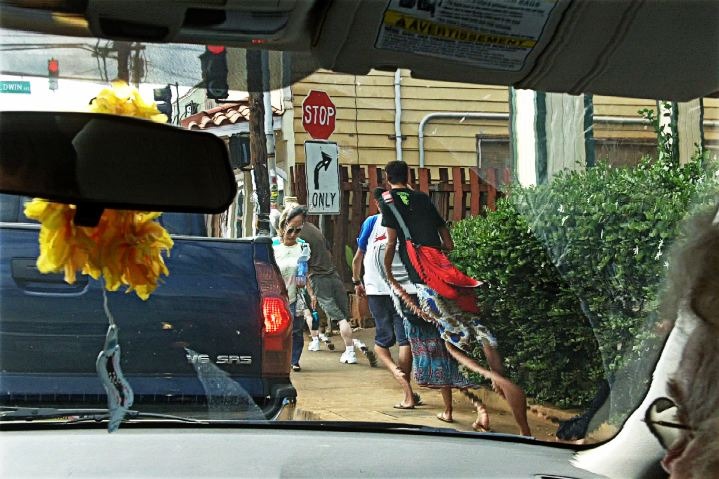Today’s post will discuss working with the SlitScan direction control in a Temporal Scan Tracker effect. All of Studio Artist’s temporal image processing effects work with loaded source movie files and process multiple input frames taken from different times in the movie to build time based image processing effects.
The Temporal Scan Tracker is a more sophisticated version of a traditional SlitScan effect. Traditional SlitScan processing slides a 1 pixel width aperture over a series of different video frames to build a composite static image from a series of video frames over time. The Temporal Scan Tracker lets you build traditional SlitScan effects, but extends them by giving you additional control over the source and destination apertures (size and positions and scan directions, which can be the same or different) as well as more input frame positioning and adjacent aperture interpolation effect controls.
You can use the Temporal Scan Tracker to create all kinds of different time based effects, where the end result is a static image or a processed video. In either case, you are using multiple input movie frames to build one static output image or output movie frame.
By playing with the relationships between object movement in the processed video and the SlitScan direction, you can stretch or distort motion, create panorama views, or re-contextualize video scans into alternate realities that don’t really exist in the real world.
Today we’ll be looking at a simple 141 frame source video taken with a motionless video camera out a car window while waiting at a stop light. The movement in the video involves the movement of pedestrians moving through the static video shot. There is some slight camera movement due to hand shake, but for all practical purposes it’s a static camera, it’s not being panned or otherwise moved on purpose.
The image below shows a screen shot of the Editor controls for the Temporal Scan Tracker used for the first gallery image at the top of the page. Note that the SlitScan direction is set to scan from bottom to top using a horizontal aperture (the Horizontal bottom-top setting). This means that a horizontal aperture positioned across the entire video frame is moved over time from the bottom to the top of the image. You can think of the aperture as a rectangular piece of the input movie frame or canvas output frame that is moved over time to build up the finished output image.









